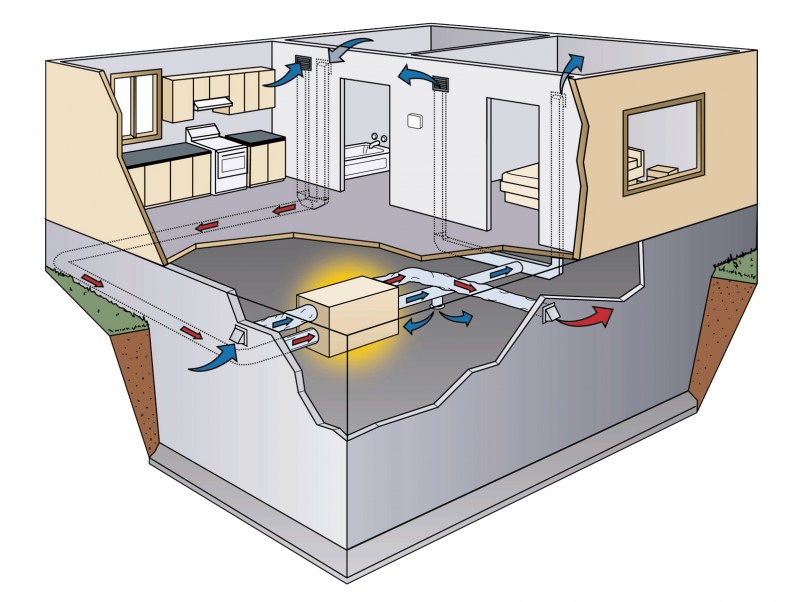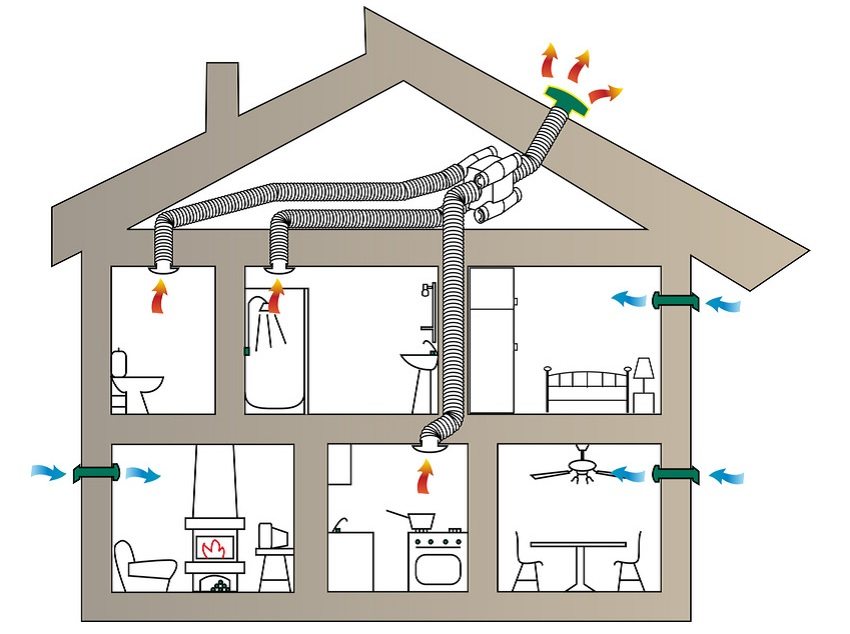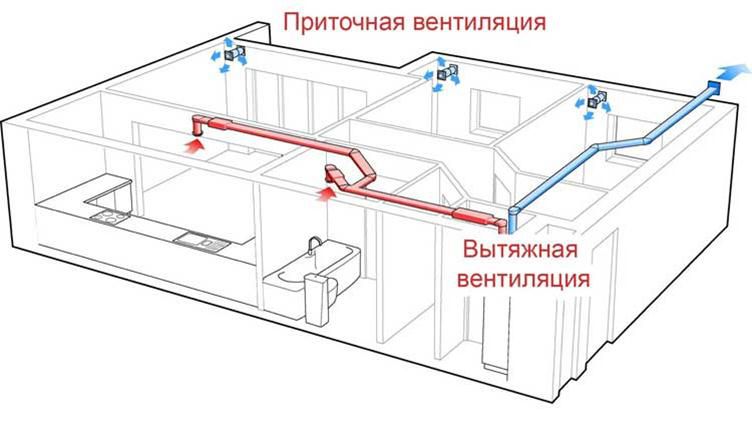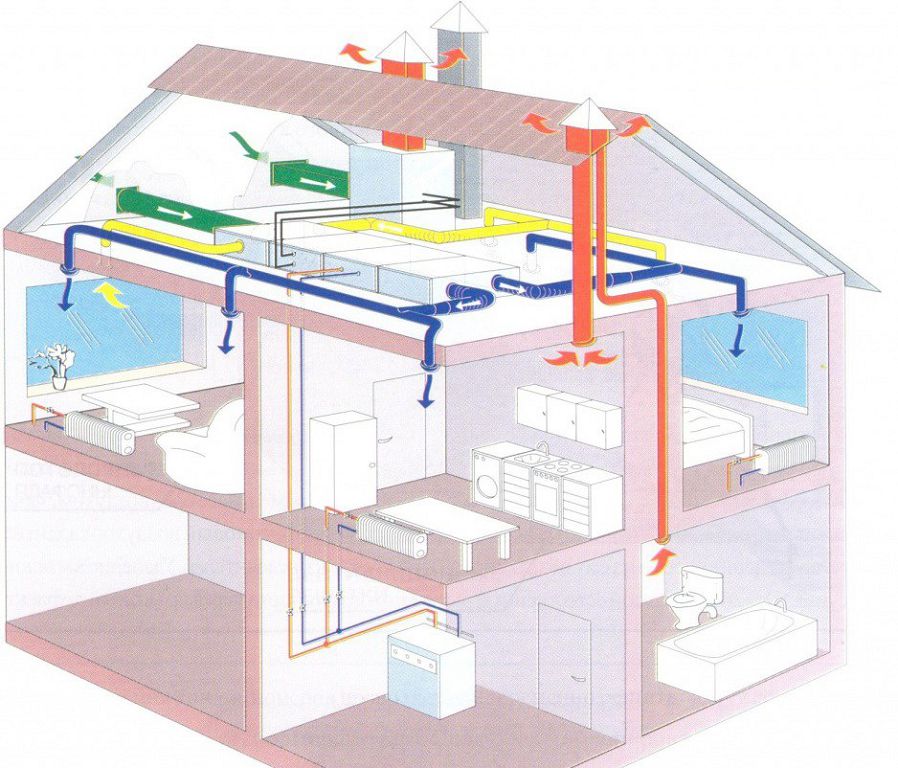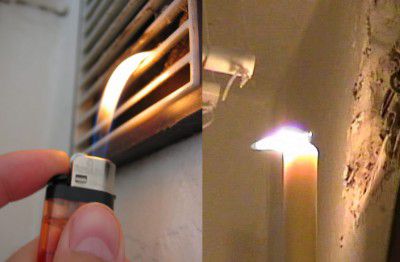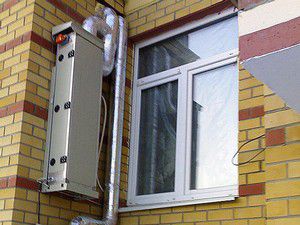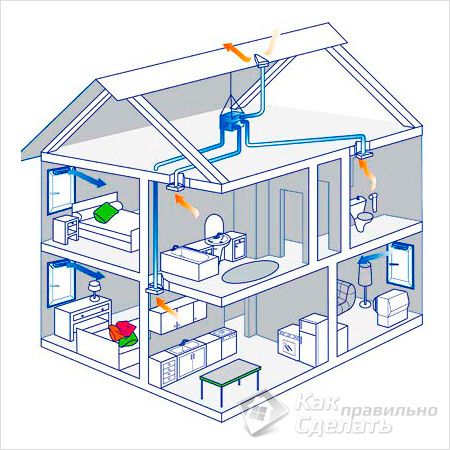The ventilation box takes up precious meters of a small kitchen area, disfigures the geometry, complicates the arrangement of furniture. "How beautifully a refrigerator, kitchen cabinet or shelf will fit in its place!" Such reasoning is not only illiterate, but even criminal. For those who have already managed to dismantle the ventilation duct in the kitchen, we advise you to restore it. Why? Next, we will give an answer, as well as help you choose the right kitchen design with a ventilation duct.
Removing the ventilation duct in the kitchen
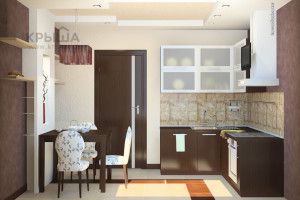
In most apartment buildings, the ventilation duct is built from self-supporting blocks: the upper ones are held on to the lower ones. Now let's imagine that an illegal redevelopment was made in the kitchen of the third floor, completely removing the ventilation duct. The structure of the upper floors hung literally in the air. The situation is dangerous, primarily for the owners of the re-planned apartment.
The destroyed ventilation box increases the kitchen area by only 0.3 square meters. meters!
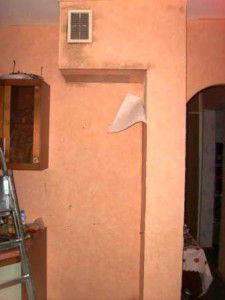
The second reason why it is forbidden to dismantle ventilation ducts in kitchens is a violation of the natural ventilation. The lower floors remain completely isolated from the general air exchange system. In gasified houses, arbitrariness threatens with fires and explosions.
What to do with a ventilation duct in the kitchen? Uneducated craftsmen will advise you to make a redevelopment: narrow the clearance of the mine, insert a tin pipe and thereby gain a few centimeters. Such alterations speak only of poor knowledge in the field of ventilation.
The natural ventilation system, of which the ventilation ducts are a part, is a gentle system that depends on many conditions. The slightest protrusion in the shaft already reduces the thrust, what can we say about the narrowing of the rectangular channel and turning it into a round pipe! Traction on the lower floors after the redevelopment will completely stop.
In this case, the law is categorical. Since natural ventilation is a common property, the owners have no right to make changes to its design. The fine for illegal redevelopment is 2.5 thousand rubles. In addition, you will have to restore the ventilation box in the kitchen at your own expense.
There are no exceptions for anyone, including the residents of the first floor. But they still have hope for the permission of the redevelopment. For the document, you should contact the management company.
Exception to the rule
Old houses are an exception, where the demolition of unused chimneys and ventilation ducts in kitchens may be permitted. Before starting work, it is necessary to collect agreement with 75% of the residents of the house, because ventilation is a common property in the house. Boxes and channels hidden in interior partitions do not fall under the prohibitions. At the same time, it is forbidden to dismantle ventilation ducts in the kitchen, in the toilet and bathroom, in the load-bearing walls.
How to restore the ventilation box
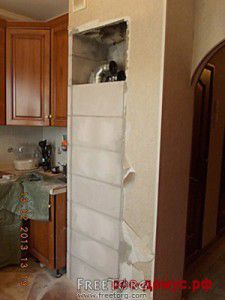
Many owners of kitchens with redevelopment sooner or later think about restoring the ventilation duct. You can do this yourself or call specialists. Professionals perform work without dismantling the adjacent built-in furniture, but the price of such services is quite high.Therefore, we recommend that you restore the ventilation box in the kitchen with your own hands, using our instructions.
Before doing anything with the ventilation duct in the kitchen, hang furniture and household appliances with plastic wrap from dust.
For the walls of the box, you can use:
- aerated concrete;
- foam blocks;
- gypsum boards.
These are non-combustible materials, due to their porous structure, they have a low weight, excellent sound insulation. They are laid on a sand-cement mixture or dry glue.
It is not advisable to erect the wall of the box made of tin, plywood, fiberboard or drywall, since it is quite difficult to make it airtight. And this is a prerequisite for ventilation.
Work progress:
- We release the air channels. We partially remove the covering on the floor, trim on the ceiling, decorative boxes. We completely free up the place where there was once a ventilation shaft;
- We build walls from building blocks using a level. We carefully cover up all the cracks;
- Do not forget to install a ventilation grill in the kitchen at the top of the box;
- It is now possible to test the thrust in the remanufactured system and decorate the new interior detail.
If you do not install a ventilation grill in the kitchen, the air exchange in the room will be disrupted.
How to decorate a ventilation duct
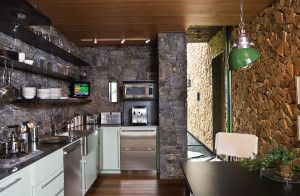
What to do with a ventilation duct in the kitchen? Decorate.
We offer two ways to hide the ventilation pipe in the kitchen.
Option number 1
Cover the ventilation box in the kitchen with hinged shelves or decorative items. Inventive owners play up the ventilation shaft in the kitchen as a stand for a flat screen TV or pictures.
The presence of a ventilation shaft for many owners makes it difficult to play with the design of the kitchen. How to arrange furniture?
Some experts recommend installing a bar counter or a folding tabletop near the box. The picture is complemented by a bar stool.
An inconvenient kitchen vent can be hidden as a base for worktops or wall cabinets.
Option number 2
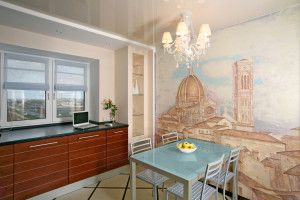
To properly close the ventilation duct in the kitchen, hide it behind a floor cabinet with shallow open shelves. It fits perfectly into an L-shaped kitchen set or installed along one of the walls.
Install a ventilation duct into the furniture. Designers often use this trick.
There are many ways to use a ventilation duct in your kitchen or to make it invisible.
For example:
- Install a decorative fireplace at the bottom;
- Beat the ventilation shaft in the kitchen as a Roman column;
- Cover with mirrors;
- Paste over with a mosaic;
- Cover with concrete or masonry tiles.
Such a simple technique will hide the ventilation pipe, such as cladding with tiles that are the same as the kitchen backsplash. Decorate the lower part of the column in the style of kitchen furniture.
How to beat and design a ventilation box
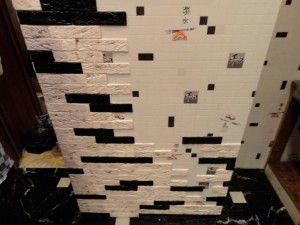
Thinking about how to close the ventilation duct in the kitchen, think about the warm and perky country style. It implies the presence of patterns or simple ornaments on vertical surfaces. And on the sides of the box, install a railing system for storing all kinds of kitchen little things. It looks light and does not clutter up the space.
If the box is located near the hob, do not wallpaper it over.
The ventilation box in the kitchen can be made with a brick or stone pillar. Gypsum tiles with imitation of stone are attached with tile glue or liquid nails. It is possible to cover the entire box as a solid one or only some of its sections.
Also suitable as finishing materials:
- decorative plaster;
- wallpaper;
- siding;
- wooden panels;
- paint.
Fragments of contrasting colors, distributed randomly, look very decorative.This is how they beat the ventilation shafts in kitchens in British or classic styles.
If the box is located near the sink, decorate it with easily washable materials.
An effective solution: hang a slate board on the box or use a special paint that creates a similar surface. It will be convenient to write down recipes, dinner menus or necessary purchases here.
So, by being smart or by going to a professional designer, you can turn an ugly ledge into a highlight of your kitchen.
Video about the restoration of the ventilation duct:

